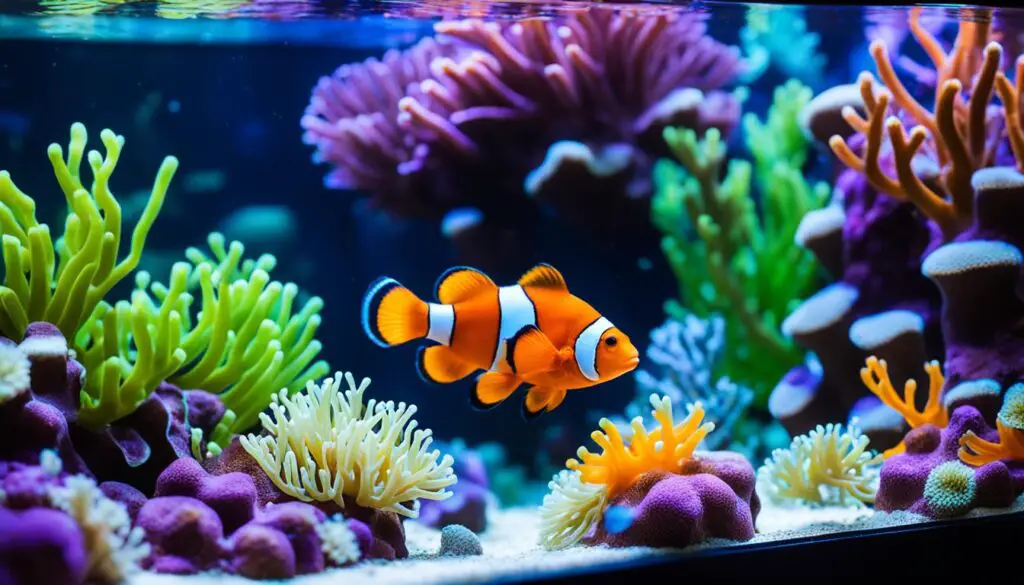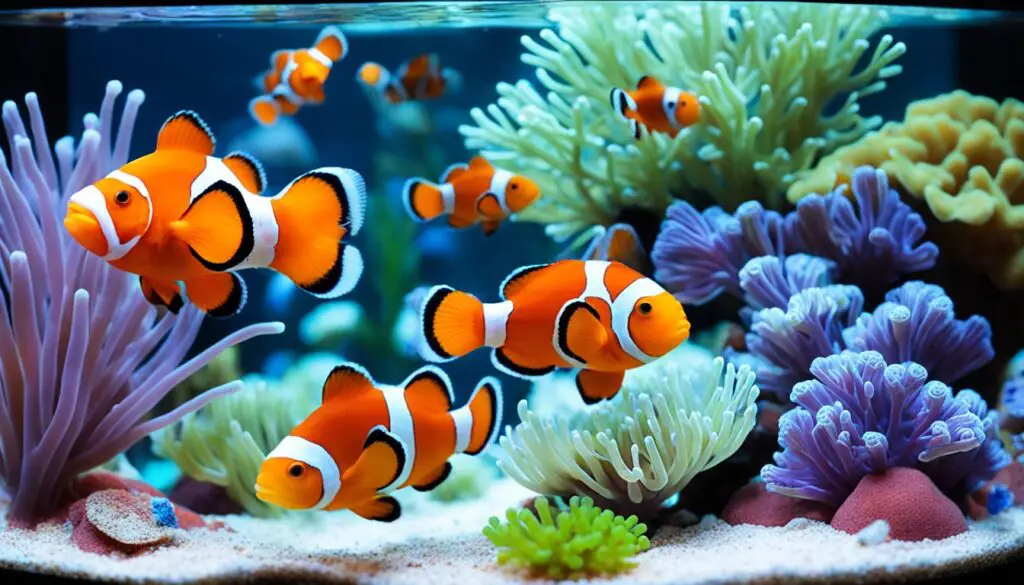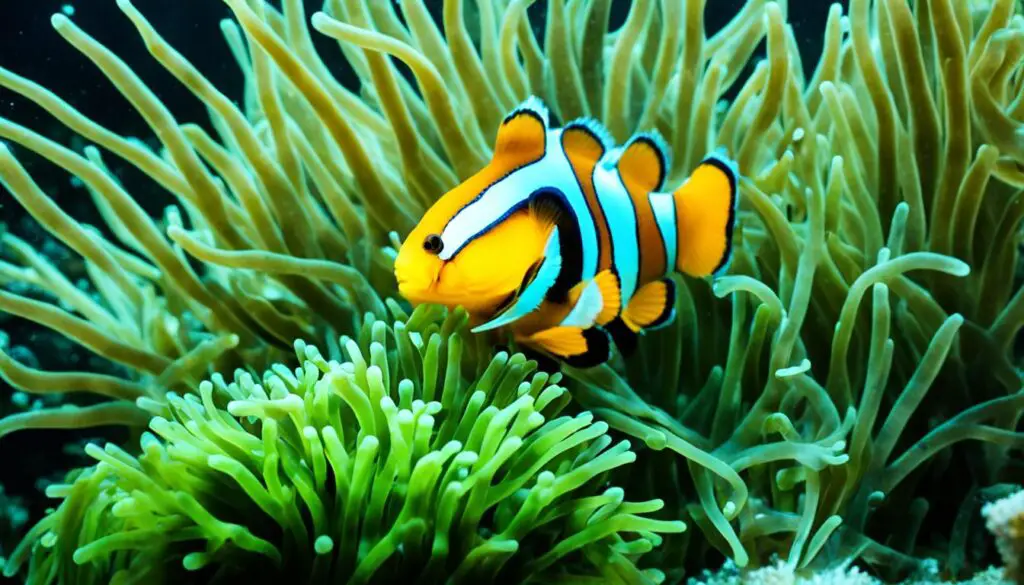Mastering Clownfish Acclimation: A Comprehensive Guide

Introduction
Clownfish Acclimation Guide: Clownfish, with their vibrant colors and endearing personalities, have long captured the hearts of both novice and experienced aquarium enthusiasts. These captivating marine fish are known for their unique symbiotic relationship with anemones, creating a truly remarkable spectacle in home aquariums. However, successfully introducing clownfish to a new aquatic environment is a delicate process that requires careful consideration and adherence to specific protocols.
Acclimation is a critical process that allows clownfish to adapt to their new surroundings gradually. It helps minimize stress and the risk of shock, which can be detrimental to their overall health. In this comprehensive guide, we will explore the fundamental steps involved in acclimating clownfish, from water parameter considerations to acclimation techniques.
Acclimating clownfish involves much more than just temperature matching; it also encompasses salinity adjustments, water chemistry evaluation, and behavioral observation. Proper acclimation is not only essential for the health of the fish but also contributes to the overall success and sustainability of a marine aquarium.
By understanding the nuances of acclimation, aquarists can ensure a smooth transition for their clownfish, setting the stage for a thriving and harmonious aquatic ecosystem. Whether you are a newcomer to the world of clownfish or a seasoned hobbyist, this guide will provide valuable insights into the best practices for acclimating these delightful creatures.

How long should I acclimate my clownfish?
The float Method
1. Float the sealed bag in your aquarium for 15 to 30 minutes to acclimate it to the aquarium temperature.
The duration of acclimating your clownfish can vary based on several factors, including the source they come from, the differences in water parameters, and the individual behavior of the fish. This duration allows them to gradually adjust to changes in temperature, salinity, and water chemistry, reducing the risk of stress or shock.
However, some aquarists may opt for a longer acclimation period, especially when transferring clownfish from vastly different water conditions or sources. The key is to observe the behavior of the fish during acclimation. If they seem calm and have acclimated well after the initial 30-45 minutes, it may not be necessary to extend the process. On the other hand, if your clownfish exhibit signs of stress, such as rapid swimming, heavy breathing, or hiding, it’s advisable to take more time, extending the acclimation period in 15 to 30-minute increments until they appear comfortable.
Ultimately, the well-being of your clownfish should guide the acclimation process. Patience and careful monitoring are essential to ensure a smooth transition for these captivating marine fish to their new home in your aquarium.
How long does it take for saltwater fish to acclimate?
The acclimation tank will need to have the same pH and salinity level as the water in the bag. Float the bag for 15 minutes then drip acclimate for 30-minutes to an hour before adding the fish to the acclimation tank.
The time it takes for saltwater fish to acclimate can vary depending on several factors, including the species, individual temperament, and the degree of difference in water parameters between their previous environment and the new one. Typically, acclimation for saltwater fish should last at least 30 to 45 minutes. This timeframe allows the fish to gradually adapt to changes in temperature, salinity, and water chemistry, reducing stress and minimizing the risk of shock.
In some cases, a longer acclimation period may be necessary. If the fish are coming from significantly different water conditions or have exhibited signs of stress during the initial 30-45 minutes, it’s advisable to extend the process. The key is to carefully observe their behavior and adjust accordingly.
For particularly sensitive or delicate species, or when moving fish from wildly varying conditions, acclimation may take several hours or even longer. The primary goal is to ensure the fish transition comfortably without experiencing undue stress. Remember that each fish is unique, and the well-being of your marine inhabitants should always be the top priority during the acclimation process.
Ultimately, the time it takes for saltwater fish to acclimate is variable, and it’s essential to remain patient, attentive, and responsive to their needs to ensure a successful transition into their new aquatic home.
How long does it take for clownfish to get along?
I would say up to 2 months, but usually less than that.
The timeline for clownfish to establish harmonious relationships with each other or with other tank mates can be somewhat unpredictable, as it depends on several variables, including individual personalities, species, and the specific conditions within your aquarium. Typically, it may take several days to a few weeks for clownfish to get along and form stable social bonds.
Clownfish are known for their territorial nature, and when introducing new individuals or pairs into the same tank, territorial disputes and hierarchical behavior may occur initially. In some cases, a dominant clownfish will establish itself as the “alpha” and may exhibit aggressive behaviors towards the other fish until a social hierarchy is established.
However, with time and patience, clownfish tend to become more accustomed to one another’s presence and often form cooperative bonds. The formation of these bonds may become apparent through shared territory and the absence of aggressive behavior.
The timeline for establishing harmony can be influenced by factors such as tank size, hiding spots, and the gender of the clownfish involved. Adequate space and providing multiple hiding places can reduce potential conflicts and help facilitate peaceful cohabitation.
Remember that every group of clownfish is unique, and while some may adapt quickly, others might require more time for peaceful coexistence. Continuous monitoring and providing a comfortable environment are essential for promoting positive social dynamics among clownfish.
How do I know if my clownfish is stressed?
If your fish is swimming frantically without going anywhere, crashing at the bottom of his tank, rubbing himself on gravel or rocks, or locking his fins at his side, he may be experiencing significant stress. Talk to your veterinarian about treatment and look into what may be causing the stress and alleviating it.
Recognizing stress in clownfish is crucial for ensuring their well-being in your aquarium. Clownfish, like all fish, can experience stress from various factors, and identifying these signs early can help address the underlying issues. Here are some common indicators of stress in clownfish:
Abnormal Swimming Behavior: Stress can cause clownfish to exhibit erratic or rapid swimming patterns. If you notice your clownfish darting around the tank or repeatedly swimming at the water’s surface, it could be a sign of stress.
Hiding: Clownfish are naturally territorial, but excessive hiding can be a sign of stress. If your clownfish constantly retreats to a hiding place and avoids interaction with tank mates or the environment, it may indicate stress.
Loss of Color: Stressed clownfish may appear paler than usual or exhibit faded colors. A vibrant and healthy clownfish will have bright and well-defined coloration.
Reduced Appetite: A decrease in appetite can be a clear sign of stress. If your clownfish aren’t eating, check for tank stresses.
Aggressive Behavior: While stress can make clownfish more aggressive, it can also be a response to stress. Excessive aggression toward tank mates can be indicative of underlying stress.
Rapid Gill Movement: Stress, poor water quality, or illness can cause rapid or difficult breathing or increased gill movement.
Maintaining consistent water conditions, hiding locations, and tank mate compatibility reduces clownfish stress. Checking water parameters and clownfish behavior will help you quickly identify and repair stress issues, enhancing their aquatic habitat.
Should I drip acclimate clownfish?
Drip acclimation is best for exporting fish since it gradually balances the bag’s water pH to your quarantine tank’s. Not all fish shop fish need drip acclimation, but you should assess pH and salinity.
Drip acclimation is a crucial process when introducing new fish, like clownfish, to your aquarium. It is a method used to help them adapt to their new environment gradually. Clownfish are sensitive creatures, and sudden changes in water parameters can be stressful or even harmful to them. Drip acclimation is a slow, controlled method that minimizes stress and allows the fish to adjust to the tank conditions.
To drip acclimate clownfish, you’ll need to use an airline tubing and a container. Start by floating the bag with the clownfish in your aquarium for about 15 minutes to equalize the temperature. Then, place the fish and the water from the bag into the container. Create a slow, steady siphon with airline tubing to drain water from your aquarium. This progressive introduction of your tank’s water into the container helps clownfish adjust to its chemical makeup and temperature.
Drip acclimation takes 30 minutes to several hours, depending on fish sensitivity and parameter variances. Once acclimated, gently net the clownfish and release them into the aquarium. This process greatly increases their chances of a successful transition and thriving in their new home.
Why do you drip acclimate fish?
Temperature acclimation alone will not be sufficient for fairly sensitive species like freshwater shrimp. However, “drip acclimation” helps your new fauna adjust to your tank’s water conditions, making the bag-to-aquarium move smoother.
Drip-acclimating fish is essential in aquariums for various reasons. When adding new fish to an aquarium, their bag or container water may be very different from your tank water. If not acclimated, these temperature, pH, and water chemistry changes can stress or shock fish.
Drip acclimation is a gradual and gentle method that helps fish adapt to their new environment. It involves slowly adding small amounts of the tank water to the fish’s container over an extended period of time. This gradual introduction allows the fish to adjust to the tank’s water conditions without being overwhelmed by sudden changes. Suddenly changing salinity can cause osmotic shock in fish, but it reduces the danger.
Drip-acclimating fish reduces stress and improves health. It’s simple but effective and shows a commitment to responsible and ethical fishkeeping, helping your aquarium’s aquatic residents.
How do I choose the right aquarium for my clownfish?
Choosing the right aquarium for your clownfish is crucial for the health and happiness of these colorful marine creatures. Several factors should be considered to create an optimal environment for your clownfish.
First, determine the size of the aquarium. Clownfish are relatively small, but they still need adequate swimming space. A 20 to 30-gallon tank is suitable for a pair of clownfish, while larger tanks provide more room for them to roam.
Next, consider the tank’s shape. Clownfish are bottom-dwellers, so a horizontal or rectangular tank is ideal. It allows them to establish their territory and explore the bottom of the tank effectively.
Water quality is paramount. Invest in a good quality filtration system to maintain stable water parameters, such as temperature, salinity, pH, and ammonia levels. Clownfish thrive in a stable environment, and consistency is key to their well-being.
Decorate the tank with live rock and anemones, which serve as shelter and a natural habitat for clownfish. Ensure proper lighting for the anemones, as they have a symbiotic relationship with the clownfish.
Selecting the right aquarium involves considering the size, shape, water quality, and suitable decor for your clownfish. A well-designed aquarium will provide a comfortable and healthy home for these iconic and charming marine fish.
Do clownfish need any special lighting in their aquarium?
Clownfish, popularized by the film “Finding Nemo,” are fascinating and colorful additions to aquariums. When it comes to lighting in their aquarium, clownfish have relatively straightforward requirements. They don’t demand special lighting, but certain considerations can enhance their well-being and the overall aesthetic of the tank.
In the wild, clownfish inhabit coral reefs where they have access to natural sunlight. In captivity, it’s essential to replicate this natural environment. I can take photos, but anemones amaze me. Clownfish and photosynthetic corals are comforted by high-quality LED lighting in most marine aquariums. This lighting boosts clownfish color and symbiotic zooxanthellae growth.
Proper lighting duration is crucial for clownfish as well. Marine aquariums typically provide 8-10 hours of light every day to mimic their natural environment. Providing too much or too little light can cause stress and health issues for the clownfish.
Clownfish don’t need specific illumination, but a decent LED system that mimics sunshine and a suitable lighting schedule can help the tank.

Conclusion
In the world of marine aquariums, acclimating clownfish is a pivotal step that cannot be overlooked. As we reach the conclusion of our exploration into the art of acclimation, it becomes evident that this process is the linchpin for the long-term well-being and success of these captivating marine fish in captivity.
By meticulously adjusting water parameters, allowing for gradual temperature and salinity changes, and closely observing clownfish behavior during acclimation, aquarists can significantly reduce the stress and shock that can jeopardize their prized inhabitants. Ensuring the fish’s comfort during this transition not only promotes their health but also contributes to a more harmonious and thriving marine ecosystem.
Clownfish live, with their vivid colors and engaging personalities, have a special place in the hearts of aquarium enthusiasts. Proper acclimation sets the stage for a fulfilling and rewarding journey, allowing us to witness the delightful interactions between clownfish and their anemone companions.
We’ve equipped you with the knowledge and tools needed to acclimate clownfish successfully, regardless of your experience level. By following these best practices, you’re not only enhancing the quality of life for these remarkable marine creatures but also fostering an environment where they can flourish and bring joy to your aquatic world for years to come.



